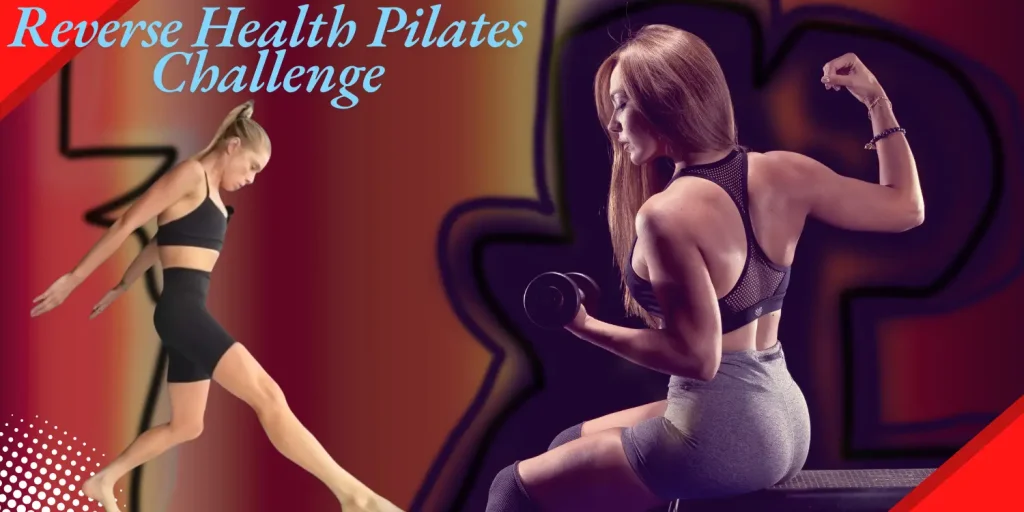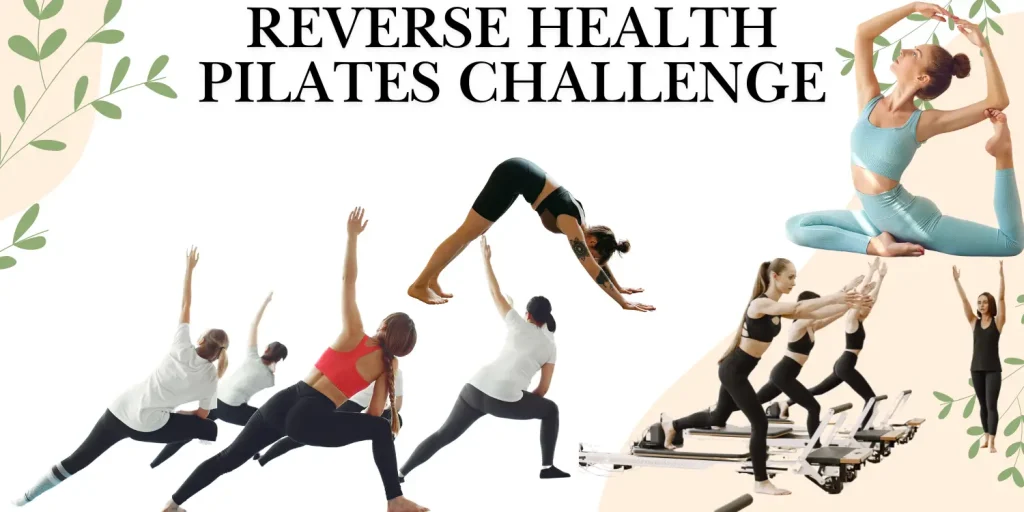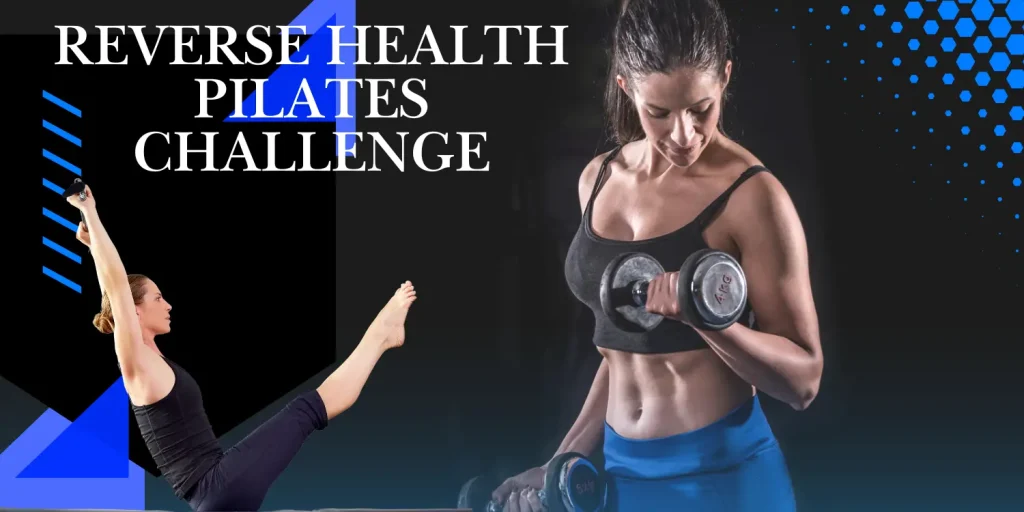Introduction about Reveres Health pilates Challenge?
An exercise program, the Reveres Health Pilates Challenge is designed to inspire people of any kind and experience to unlock the potential of Pilates for getting stronger and more flexible as well as improving overall health. Through making participants adhere to a laid-down Pilates regimen for a given amount of time, this challenge fosters individualism and unity. In conclusion, the Reveres Health Pilates Challenge is a motivating environment within which to enhance your crusade, no matter the number of sprints you have taken.
In fact, there are no injuries involved at Reveres Health, and clients are encouraged to embrace mindful movement, which is made possible by body awareness for health enhancement. As in any Pilates session, it is possible to build a balanced program that will include flexibility training, muscular strength in the posterior section of the body, and methods of encouraging conscious breathing. Qualified trainers take the participants through the activity, catering to those who want to take on an easier challenge as well as those who wish to exercise more.
This challenge employs the mind and also the body, besides involving eating habits and the desire to work out. Taking into account dedicated participants who perform Pilates daily or weekly, all of them are in touch with their bodies and experience success. To be a part of the Reveres Health Pilates Challenge is a unique opportunity to build sustainable healthy patterns, reduce stress, and align the spine as well as become the part of a healthy community.

How much is reverse health Pilates?
Reveres Health Pilates is offered in various packages or membership options; therefore, costs may vary depending on the package choices made. Regardless of your choice of a short-term or long-term membership or a specific short-term challenge or an individual lesson, the prices at Reveres Health are flexible. In regard to the type of the class, Pilates in-studio or online, the price can range from $20 to $40 per session to offer personal attention.Health pilates
Reveres Health packages entitle clients to several classes and other additional benefits for those who seek a more strict schedule, such as a monthly pass. A month or more of the monthly membership can be between $150 and $250 for different programs, and typically if one is to pay for many classes or several months at once, there are discounts. These subscriptions usually come with the privilege of having a limited number of lessons per month, but the others may contain the extra features such as workshops, or private lessons, or the streaming content.
Another bonus fee may apply for an event if you are keen on, say, the Reveres Health Pilates Challenge. Depending on the period of time and kind of services, challenges may vary from $100 to $300. Often they present a comprehensive plan that effectively assists the participants to achieve specific fitness goals in a specified period.
Reveres Health also offers treatment and training for individuals in need of such personal workouts or personal Pilates training. These are usually more costly depending on the practitioner, and it is ranges from $60 to $150 per session.

Can Pilates change your body?
In refuting the arguments of Pilates haters, it is possible to say that Pilates indeed can change the body, but it does not do so in the way movies would like us to believe: this is not a quick mutation that turns into a Some of the primary benefits of this low-impact training method include building up the middle and exercise that helps you improve the flexibility of your spine and the overall posture of the body. There are many advantages if a person practices Pilates regularly, even if it doesn’t provide the same level of intensity as strength training or HIIT.Health pilates
Being one of the means Pilates changes the body, strengthening deep, stabilizing muscles is one of the key things that Pilates aims at. It is particularly important to remember these muscles as they help in support of the spine and posturing, though a number of them are rarely targeted by regular exercises. This eventually leads to attaining a slender body shape, especially in the hips, back, and abdomen parts of the body. By focusing on these muscles, Pilates can reduce that probability and help to strengthen my joints in the long term.Health pilates
Pilates targets smooth, coordinated movements and therefore increases the flexibility of the muscle being used. Due to the improved flexibility that consolidates in your body parts, your joints may have a broader array of motion, which is useful for your daily activities as well as workouts. Moreover, configuration versatility can assist in lessening the tension and the pain within the muscles, which might obscure the physical functionality.
Pilates also enhances the right position and balance of the body, hence helping in posture. This may help your self-esteem and overall feelings of health because you gain further understanding of how your body posture works. This may also alter your body language to an extent since you start feeling more confident about yourself.
If one wants to reduce his/her size a bit to get a Pilates form body, Pilates could sometimes make a difference, although effects aren’t instant. Pilates can be a lifestyle or an additional training technique that complements people’s fitness training programs.

What are the disadvantages of Pilates?
There are quite a number of benefits associated with Pilates as explained above; however, Pilates also has one or two challenges that may deny it applicability to everybody. The main disadvantage is that it can be very difficult indeed to learn—especially for beginners. However, due to the correct form, controlled movements, as well as the breathing technique, this concept may be hard for a beginner to exercising or anybody who has no prior experience in mind-body techniques. To make matters worse, without proper direction, mistakes are almost inevitable and can set back any solutions and could be damaging.
The only demerit is that Pilates is not as intense as HIIT or weight training exercises, for instance. It may thereby not provide the intensity of cardiovascular benefits or the ability to add more muscles. Some goals may not be well met by Pilates—if your goal is weight loss or gaining a significant amount of lean mass, you will not enjoy as much success.
Moreover, Pilates courses tend to be pricey, particularly if, for example, you use equipment such as reformers or attend classes at a Pilates studio. And that’s why it can be quite costly for those who are up against a tighter budget. While there are cheaper substitutes for classes, like at-home exercising or watching lectures on the internet, they cannot provide the kind of feedback and correction as real-life classes do.Health pilates
Last but not least, as it is, Pilates might not be suitable for people with special medical conditions or physical disorders. While Pilates entails the least invasiveness of movements and its focus on strengthening proper body muscles, it may also aggravate back or joint pains occasionally depending on the form if not personalized to the individual.Health pilates
Taking everything into consideration, therefore, even as Pilates is a good exercise program for most people, it is not the best for all and should be done with an appreciation of what it is not.
Which is better, Pilates or walking?
Both walking and Pilates have their merits, but the question of which is better depends on the kind of interest or the fitness goals of any user.
Pilates: This is a full-body, low-intensity exercise that targets the flexibility of the muscles of the abdomen and the rest of the body. They exercise deep stabilizing muscles, enhance balance, and correct the posture of an individual. Besides helping minds to concentrate and bodies to develop proper bodily kinaesthetic awareness, Pilates is excellent for flattening and toning up hips, backs, and bellies. It may be beneficial in helping to back up a specific goal—such as making your stomach muscles stronger, improving your flexibility, or preventing injuries. But often, it required outcome might take time, and it traditionally tends to require a specific setting or a selection of equipment.Health pilates
While the exercise of walking is cardiovascular exercise, which has lots of benefits in losing weight, for the heart, and for overall physique as well. This can be done practically anywhere; it is easy and does not necessitate the use of any special apparatus. Most importantly, when done outside, the walk improves the brain, how many calories you burn, and your stamina. If your goals are thus: walking is a great place to be if you are aiming at controlling weight, reducing stress, or enhancing your heart health.Health pilates
For access, walking is always easier compared to Pilates, which requires a certain commitment in the way of performing the right technique. Pilates is more preferable if a person wants his or her body to be overhauled in terms of strength, as well as flexibility of the muscles. Walking can be better if you are looking for a basic, non-intensive method of keeping fit.
The last of all is the best in a way that regards individual fitness needs and choices. That is why incorporating the two practices turned out to be optimal for specific individualsHealth pilates

Which Health Pilates Challenge is most effective
The best Pilates challenge for your health targets will largely be a function of your specific fitness goals because different challenges work out the different areas of the body in different ways, such as strength, flexibility, and general conditioning. However, the most popular and effective Pilates challenge is known as the “30-Day Pilates Challenge,” which is comprised of short Pilates sessions each day with a focus placed on the particular area of the core muscles, flexibility, and a full-body workout.
This challenge is good because it encourages more practice, and practice is what is required to get the results of Pilates. Your posture, balance, and tone will gradually increase with time, especially your ab muscles, which act as the center of support for most Pilates exercises. A 30-day commitment can also help to enhance the practice of attunement—a major part of Pilates, where the mind and the body are alert and engaged.
Another useful challenge is the “Pilates Reformer Challenge,” if you actually own Pilates reformer equipment. It involves more complicated movements and resistance exercises in this challenge, and this is actually what may lead to the building up of strength and muscle tone. Resistance training is particularly useful in increasing flexibility and muscle endurance, the two being primary characteristics of an improved physical condition.
A Pilates stretch and flexibility challenge might be helpful for anyone focused on Pilates stretches and fitness and aiming at finding ways to reduce stress. Such a sort of challenge proves to be psychically beneficial in addition to having more significant benefits mentally since it involves dynamic stretches, using gentle and progressive motions to enhance the range of motion and the length tolerance of muscles.
When it comes to the Pilates challenge, the best one is one that aligns with your exercising goals with regards to strength, flexibility, or overall body awareness. To obtain the maximum benefits in Pilates, you have to be a regular and patient practitioner of the program.

.
Reveres Health pilates Challenge Conclusion?
In conclusion, the Reverse Health Pilates Challenge is a rather unique and effective approach to improving overall health and fitness. As a call to attention to balance, supple executive, and immobilized motion, this task enables the members to establish a root base for sustainable health. It is a definitive training program because it contains slow, intense concentration with exercises that are beneficial to enrich cognition, proprioception, and muscle mass.
The Reverse Health Pilates Challenge can effectively help you with your goals, no matter whether you want to improve your posture, get more flexible, or sculpt your muscles. It is convenient to have it increase in difficulty from novice to expert skill level and thus will be useful for all learners. From any Pilates exercise, it is only possible to get long-term results if the exercises are performed regularly and in the right manner.
Finally, the Reverse Health Pilates Challenge strengthens the positive message behind Health Pilates and more permanently influences its practice. It can therefore be recommended to almost anyone who seeks to increase his or her vigor and well-being in a gentle, moderate way.
